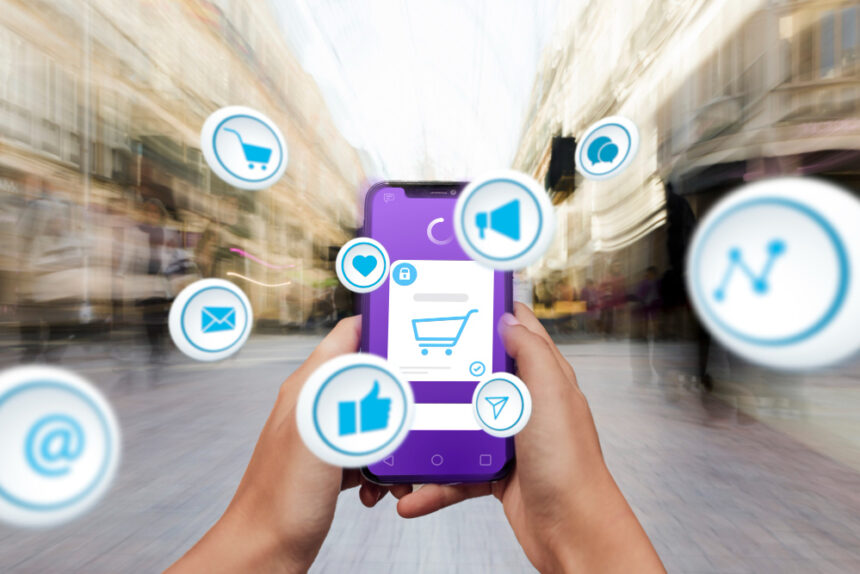Social media is no longer just a space for socializing—it’s an evolving digital marketplace. From Facebook to TikTok, platforms are now powerful tools for selling, promoting, and creating entire business empires. This shift is known as the Social Commerce Revolution. It’s not just a trend—it’s a transformation in how we buy, sell, and build trust with audiences.
Social media marketing has taken center stage in modern business strategies. Brands and individual creators alike are realizing that engagement metrics such as likes and comments can be converted into real revenue. By leveraging storytelling, influencer partnerships, and platform-specific commerce tools, you can turn your social media presence into a thriving source of income.
What is Social Commerce, and Why is It Booming?
Social commerce refers to the use of social media platforms to promote and directly sell products and services. Unlike traditional e-commerce, social commerce integrates the buying process directly into social apps, eliminating the need to redirect consumers to external websites.
Social media marketing has evolved significantly to support this. With features like Instagram Shops, Facebook Marketplace, Pinterest Buyable Pins, and TikTok Shop, the consumer journey is shorter and more intuitive. These platforms now provide tools that allow sellers to showcase products, answer customer queries in real time, and close sales—all within a single app.
From Influence to Income—The Power of Engagement
At the heart of social commerce is engagement. Your followers, likes, comments, shares, and direct messages form a digital currency that can be monetized. The better your engagement rate, the more profitable your social media marketing efforts will be.
Influencers and creators now play a vital role in the buyer decision-making process. A well-placed product recommendation or authentic review can lead to significant sales. Brands understand this and are increasingly collaborating with micro- and macro-influencers to reach niche audiences. If you have a loyal community, no matter how small, you’re sitting on untapped financial potential.
Choosing the Right Platforms for Monetization
Not all platforms serve the same purpose. Knowing where your target audience spends their time is crucial. Facebook still holds the largest user base, ideal for older demographics and product variety. Instagram is perfect for visual branding, lifestyle products, and fashion.
Meanwhile, TikTok has exploded as a hub for spontaneous discovery. Products can go viral overnight, thanks to short-form, entertaining content. Pinterest, often overlooked, is a goldmine for niche products, particularly in fashion, home décor, and DIY categories. Aligning your social media marketing with the platform’s native strengths is a strategic move that yields better ROI.
Building a Profitable Personal Brand
Your personal brand is your digital storefront. It communicates your value, authenticity, and expertise. In the social commerce era, trust is currency, and audiences want to buy from people they connect with.
Consistency in visuals, tone, and message across all platforms creates a strong brand identity. Invest time in content creation that not only sells but also educates, entertains, or inspires. The more you give to your audience, the more they’ll give back—in engagement, loyalty, and eventually, conversions.
How to Sell Without Being Salesy
Hard selling doesn’t work on social media. Users are there to connect, not to be bombarded with ads. That’s why storytelling is the most powerful tool in your social media marketing toolkit.
Frame your product or service within a narrative. Show how it solves a problem or improves a lifestyle. Use testimonials, behind-the-scenes footage, and real-life use cases to build credibility. Instead of pushing a product, focus on creating value and trust.
Leveraging Influencer Marketing Strategically
Influencer marketing is more than just paying someone with a large following to post about your product. It’s about choosing the right voices that align with your brand values and can authentically promote your offer.
Micro-influencers, those with 1,000 to 50,000 followers, often boast higher engagement rates and niche influence. They’re more affordable, and their followers trust them more than big-name celebrities. Effective social media marketing means partnering with the right influencers and giving them the creative freedom to connect with their audience naturally.
Creating Shoppable Content That Converts
Shoppable content transforms casual browsing into instant purchasing. Whether it’s an Instagram Story with a swipe-up link, a TikTok with tagged products, or a Facebook carousel ad, shoppable content eliminates friction in the buying process.
To optimize conversions, ensure the user experience is seamless. Use high-quality visuals, compelling captions, and clear calls to action. Analytics show that shorter paths to purchase increase conversion rates, making shoppable content a cornerstone of modern social media marketing.
Mastering Video Marketing on Social Media
Video is king. Platforms like TikTok, Instagram Reels, and YouTube Shorts have revolutionized how people consume content. Video allows you to demonstrate products, share stories, and engage audiences on a deeper level.
Focus on creating short, impactful videos that highlight key benefits. Tutorials, unboxings, and behind-the-scenes content perform well. Combine these with trending audio and hashtags to increase visibility. Social media marketing without video is like trying to fish without a hook—you won’t catch much.
Using Analytics to Refine Your Strategy
Every like, share, and click tells a story. Social media platforms provide robust analytics that can inform your marketing decisions. Track performance indicators like reach, engagement, click-through rates, and conversions to understand what works.
Use A/B testing to experiment with different content formats, posting times, and ad creatives. The more data-driven your strategy is, the more effective and profitable your social media marketing will become.
Monetization Tools Built Into Social Media Platforms
Each platform now offers built-in monetization features. Facebook and Instagram have Shops. TikTok has TikTok Shop and affiliate tools. YouTube offers Super Chats, memberships, and ad revenue. Even X (formerly Twitter) has tips and subscriptions.
Take advantage of these features. Set up your store properly, ensure it’s optimized for mobile, and link your payment methods. Combine this with high-converting content, and you’re positioned to turn your profile into a steady income stream.
Affiliate Marketing and Social Media Synergy

Affiliate marketing is a perfect partner for social media. By sharing affiliate links in posts, bios, or stories, you earn a commission for every sale generated through your recommendation.
Choose affiliate programs that align with your brand. Authenticity matters—only promote products you trust and use. Social media marketing thrives on honesty and relatability, and your followers will reward that with their purchasing power.
Building Trust with Social Proof
Social proof is a psychological trigger that influences buying behavior. Reviews, testimonials, user-generated content, and influencer endorsements all build credibility.
Encourage your audience to share their experiences and tag you. Reposting this content not only validates your product but also strengthens your community. Effective social media marketing includes an ongoing strategy to collect, showcase, and leverage social proof.
The Importance of Community Over Followers
Having 100 loyal fans is more valuable than 10,000 silent followers. Community is what makes social commerce thrive. Engage with your audience. Reply to comments. Ask questions. Host live Q&As.
When your audience feels heard and valued, they’re more likely to support your offers. Social media marketing in 2025 is no longer just about broadcasting—it’s about building genuine two-way relationships.
Running Paid Ads for Targeted Results
Organic reach is valuable, but sometimes paid ads give you the boost you need. Social media platforms offer highly targeted ad options that let you reach users based on interests, demographics, behavior, and even shopping intent.
Start with a small budget, test your creatives, and scale what works. Paid ads, when used alongside organic strategies, can exponentially increase the effectiveness of your social media marketing.
Avoiding Burnout and Staying Authentic
The pressure to constantly create content and maintain engagement can be overwhelming. Avoid burnout by batching your content, scheduling posts, and taking digital detoxes when needed.
Stay true to your voice. Audiences value authenticity over perfection. When you show up as yourself, your audience connects more deeply—and that leads to stronger loyalty and better monetization opportunities.
Social Commerce Is the Future—Are You Ready?
The lines between social interaction and commerce have officially blurred. Social media marketing is no longer optional—it’s the heartbeat of modern business. Whether you’re a brand, a solopreneur, or a content creator, the opportunity to monetize your presence is bigger than ever.
By embracing social commerce tools, prioritizing engagement, and staying authentic, you can build a profitable and sustainable business online. This is more than just a trend—it’s a digital revolution. Will you be a part of it?

